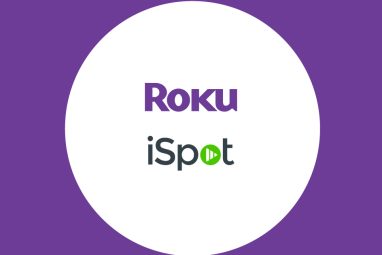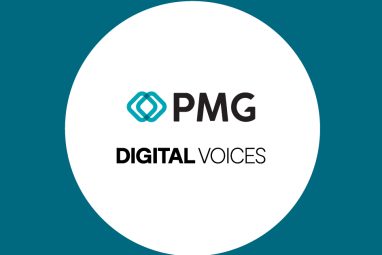IAS Report Uncovers How Misleading Content Impacts Digital Advertising
Integral Ad Science, a global digital media quality provider released its Misinformation & Media Quality report that uncovers how false information affects the digital advertising industry. The report of digital media experts explores the challenges that misleading content poses for media strategies, as well as what actions advertisers are taking to protect their campaigns against […]
Topics
What to Read Next
- Martechvibe Launches the Marquee Awards to Celebrate Breakthrough Digital Campaigns
- Top Marketers 4X More Likely to Use AI, Consolidate Tech
- Roku and iSpot Bring Outcome-Based Optimisation to Streaming
- PMG Expands Influencer Marketing Capabilities with Acquisition of Digital Voices
- PayPal Ads Launches Transaction Graph Insights & Measurement

Integral Ad Science, a global digital media quality provider released its Misinformation & Media Quality report that uncovers how false information affects the digital advertising industry.
The report of digital media experts explores the challenges that misleading content poses for media strategies, as well as what actions advertisers are taking to protect their campaigns against these growing threats.
“As we continue to classify sources of misinformation, our report illustrates the heightened need to focus on controlling advertisers’ contextual adjacencies, including the implementation of suitability frameworks that specifically address false or misleading content,” said Tony Marlow, CMO, IAS.
“Coupled with our Global Disinformation Index (GDI) partnership, which provides advertisers with enhanced misinformation protection, this research reveals how industry leaders are grappling with misleading content and what actions they are, or aren’t, taking to protect both current and future campaigns.”
IAS, in partnership with YouGov, surveyed over 500 digital media experts from brands, agencies, publishers and adtech providers to examine perspectives surrounding misinformation, disinformation, and fake news. The research revealed the following trends:
A Vast Majority of Media Experts Agree Misinformation Should be Actively Avoided, But Few Say Their Organisations Have Clear Guidelines
The majority of media experts (73 per cent) “agree” or “strongly agree” that ad buyers and sellers must actively avoid misinformation, disinformation, and fake news. However, less than half (47 per cent) of those media experts reported that their organisations have clear guidelines regarding advertising alongside misinformation.
Despite its impact in diminishing audience reach and advertising opportunities, broad blocking is most commonly used by industry experts to avoid misleading content. Nearly half of media experts (45 per cent) plan to block entire content types, 43 per cent will block specific topics, and 38 per cent will block geographic locations where misinformation is common.
Context-based strategies, which allow ad buyers and sellers to avoid misinformation with minimal impact on reach, are underused. Less than one-third (32 per cent) of respondents currently use or plan to use context-based avoidance and targeting methods, while less than one-fifth (18 per cent) leverage pre or post-bid avoidance segments that avoid undesired placements in the bid stream.
Recent Global Events Have Fueled the Threat of Misinformation, Disinformation, and Fake News Content
As ad spending continues to grow, total media ad spend is expected to approach $350 billion in 2022, making media quality assurance ever-present as buyers and sellers seek to minimise known and emerging threats. The Global Disinformation Index (GDI) estimates that advertisers unwittingly provide at least $235m to global disinformation sites, on an annual basis.
The majority of experts agree that the spread of misinformation has been fueled by recent global developments. Media experts surveyed reported that the volume of misinformation has increased due to political polarisation (76 per cent), recent geopolitical developments (68 per cent), and the ongoing COVID-19 pandemic (62 per cent).
A Large Number of Industry Experts Report High Levels of Concern Regarding Media Threats
As ad spending grows, media quality threats will remain top of mind, with 84 per cent of experts reporting “high” or “very high” levels of concern about at least one threat. A majority of these industry experts flag content-spreading misinformation, disinformation, and fake news as the most concerning media quality threats, with 63 per cent reporting “high” or “very high” levels of concern. In such an event, impact on company reputation and consumer distrust are of greater concern than campaign ROI.
Around disinformation, 42 per cent of experts conveyed concern about the impact on their company’s reputation or consumer distrust in legitimate content and advertising, whereas 29 per cent cited concern over reduced audience reach and only 22 per cent around lost media budget/revenue.
Though digital media experts agree that the spread of misinformation is the most concerning media quality threat, apprehension persists around ad fraud, adjacencies next to questionable content (i.e. brand risk), and low viewability for more than half of respondents, according to the report.
Marketers and Brands Prioritise Social Platforms Even Though They Consider the Environment Vulnerable to Misinformation
The research shows that marketers are prioritising social platforms. Almost half (42 per cent) of respondents identified social platforms as a priority. However, more than half of respondents (60 per cent) consider social platforms as the most likely environment to experience misinformation incidents, followed by mobile and audio.









































































































